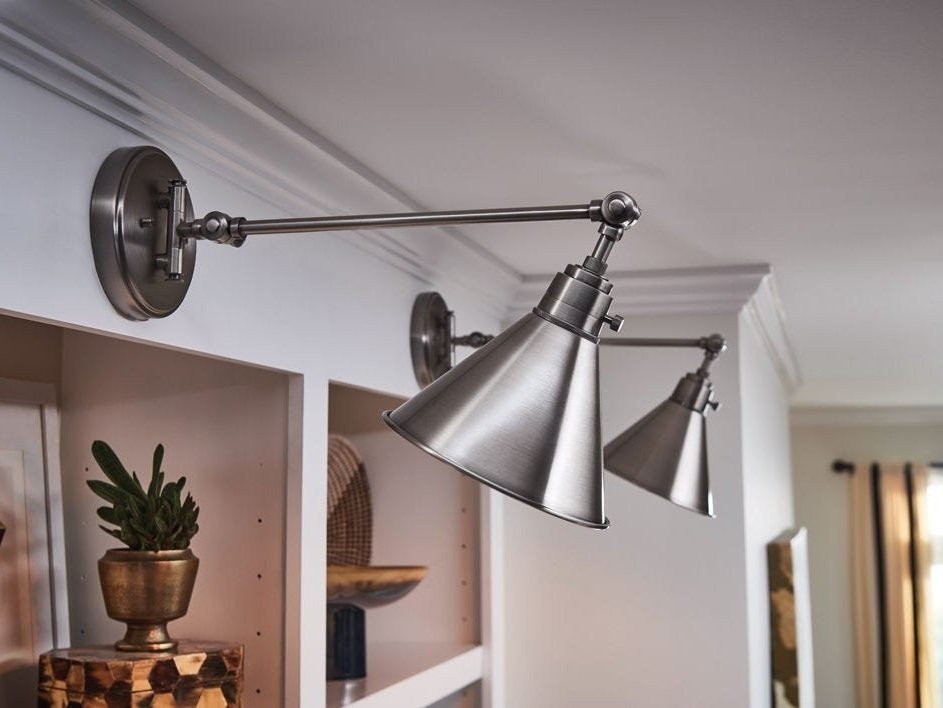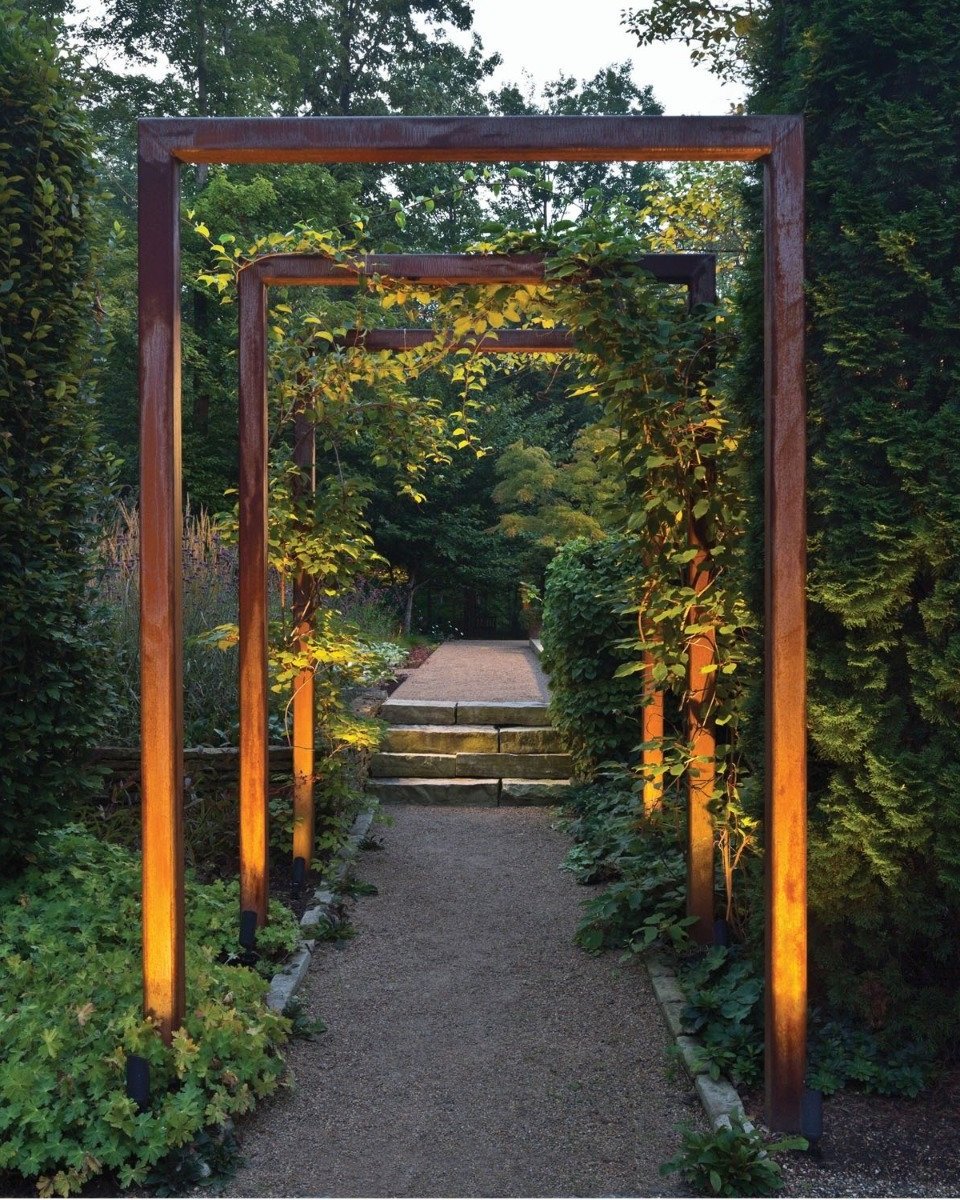Lighting made simple.
Updating your lighting, whether it’s a large or small project, is serious business.
With a little research and advance planning, your lighting selections will add beauty and functionality to each room in your home!
7 Smart Tips to Choosing the Right Lighting
How high is your ceiling? Remember that taller ceilings demand larger fixtures.
What type of lighting do you need? Choose from ambient, accent, task or decorative.
How big is the room you are trying to illuminate? Scale is important, as well as layering light, to ensure you get the proper illumination and functionality.
What design and finish works best? Choose one that appeals to your personal style and will complement the overall décor of the room.
Are you considering all possibilities? Hanging a grouping of smaller fixtures over a kitchen island, dining room or coffee table can add a unique look and have just as much impact as one larger chandelier.
What is the style of the exterior of your home? You’ll want to choose outdoor lanterns that complement the style of your facade, not necessarily match the interior fixtures.
Have you considered the safety aspect? Illuminating dark areas of your property along with paths, walkways, driveways, around decks, patios and stairs will ensure safety and security for you and your guests.
Dining Room.
This is the room where decorative and accent lighting is most important. Nobody wants to eat under intense lighting, so keep the mood soft. Layer with light from a variety of sources to get the most flexibility for creating different moods in the same room. Using dimmers allows you to use the bright light you need while setting your table, and then bring the light down when your guests arrive.
The bottom of a Dining Room chandelier should sit about 800mm – 900mm from the table.
A lighting fixture above a table should be approximately ½ the width or diameter of the table.
Add sconces to layer lighting into any space and install the light source 1675mm from the floor and the fixtures 1800mm – 2500mm apart.
Kitchen.
Kitchen lighting has two functions. It must provide adequate task lighting over the benches and stove, while also looking great as the kitchen is a place that is used for entertaining too.
Be mindful of the fact that a body working at a kitchen bench shouldn’t block the light source, throwing the workstation into shadow. Benchtop areas that are under cabinets and pantries also require attention.
A group of pendants is ideal for islands and breakfast bars, with smaller fixtures generally hung in odd numbered groups, and larger pendants in pairs. Keep in mind that the pendants should not prohibit those standing around the island from seeing one another.
Every space is different so heights will vary, but pendants should typically be hung with the bottom of the fixture 700mm – 1000mm above the countertop.
It is also important to remember that you do not want to knock the pendant as you are cooking, so this might be hung higher if you have taller family members.
Linear pendant lights are also a great option for over a kitchen island or benchtop! These can be sleek and modern, or a more decorative piece.
We have found that a slightly shorter linear pendant creates the most aesthetically pleasing proportions for the eye, so we suggest to have the linear pendant light 300mm -600mm shorter than your counter.
Lounge.
Layer with light from a variety of sources to get the most flexibility for creating different moods in the same room.
Table lamps and floor lamps can be used to increase overall ambient light, as well as some versions offering extra directional light which can be used for more task orientated activities in the lounge, for example reading or sewing.
- For Table lamps, the lamp base should be roughly one-third the width of the side table when measured at the lamp’s widest point.
- You don’t want the light to be shining over your head, nor do you want it right in your eyes. Look for a table lamp the same height as your side table or console, plus an extra 5cm or 10 cm. This creates a balanced look between your side table / console and your table lamp.
- For lampshades, it is suggested that the lampshade is twice as wide as the lamp base, and one third the height of the lamp base.
How big should an overhead light be?
First take the length and width of the space in metres and add them together, divide the result by 15, and that is roughly the diameter of fitting you should be looking at in metres.
So for a 6m by 5m lounge, do the following;
5 + 6 = 11, divided by 15 = 0.73m or 730mm.
For this size room, you would be looking for a light that was between 700mm – 750mm in diameter.
Bedroom.
Overhead lighting such as a central flush, semi-flush mount or chandelier will allow for the general illumination of the room.
Task & Ambient lighting such as bedside wall lights or table lamps make for easy reading, but also bounce light off the walls, lending a softer mood and provide a more spacious feeling.
By breaking the room into several zones by lighting and switching them separately, the function of the room can change.
How big should an overhead light be?
First take the length and width of the space in metres and add them together, divide the result by 15 and that is roughly the diameter of fitting you should be looking at in metres.
So for a 3m by 4m bedroom, do the following;
3 + 4 = 7, divided by 15 = 0.47m or 470mm.
For this size room, you would be looking for a light that was between 450mm – 500mm in diameter.
Bathroom.
Bathrooms require good task lighting. The mirror must be well lit to make shaving and applying make-up easy.
It is important to use colour accurate light sources to give a natural appearance when looking into the mirror. By placing light fittings either side of the mirror, or a linear wall mounted fitting directly above the mirror, as well as ceiling mounted fitting above will improve visibility and eliminate shadows when looking into the mirror.
Fixtures above the vanity should be a minimum of 610mm wide and mounted 1900mm – 2100mm above the floor.
Wall lights either side of the vanity mirror should be mounted at eye level, and approximately 900mm - 1100mm from one another.
Laundry & Mudroom.
Lighten up your laundry or mudroom with the proper sized flush or semi-flush mount fixture.
Overhead lighting such as a flush or semi-flush mount provides the main lighting of the room, while wall lights on either side of a laundry tub or folding area act as a decorative form of task lighting.
2.4m or below ceilings are best fitted with a flush mount fixture. 2.7m or 3m ceilings are the perfect height for a semi-flush mount, which typically hangs less than 350mm from the ceiling.
Entry & Hallways.
By using wall scones and decorative fittings in the entry and / or hallway, you can add a warm, welcoming touch and provide a secure entry to your home.
Care should be taken with wall mounted fittings to prevent them protruding into the traffic area.
Consider using track lighting to highlight photographs and artwork in hallways and entry areas.
When determining what type of fixture to hang in your entry, be advised that the bottom of the fixture should be at least 2.1m from the floor. If there is a window above the door in a two-story entry, centre the fixture so it can be seen from outside.
Wall lights add a layer of light in a large entry or hallway. They should be installed 1525mm from the floor and approximately 1800mm – 2500mm apart.
Outdoor Lanterns.
Use of decorative exterior lighting in darker corners entries and pathways not only make these areas them more pleasing to the eye, but you will also be safer from accidents and intruders. Security lighting can be thought as a separate issue from the decorative exterior lighting, although they can cross over - Consider using sensors for with your decorative wall lights.
Decorative lighting by your front door not only creates a warm, welcoming feeling, but also tells guests where the entry is.
Two exterior wall lights should appear to be 1/4 the size of your door from the street, or 1/3 the size of your door for one exterior wall light.
In all cases, the centre of the light source should rest approximately 1675mm above the threshold.
Landscape Lighting.
The purpose of landscape lighting is to unify the relationship between your house and the landscaping that surrounds it. It enhances your outdoor living environment, extends the hours of enjoyment you and your family spend outdoors and provides safety and security. Well-designed landscape lighting will reinforce aesthetic appeal and increasingly add more value to your home.
Path & area lighting should be installed to enhance landscaping and to safely illuminate pathways.
About 1.8m between each light is a general guideline to follow. Consider safety by illuminating and protecting against unwanted guests with additional lighting in dark areas of your property.
Uplighting (illuminating trees or other elements from below) will create soft focal points in the landscaping after the sun goes down. Use a flashlight to test where you'd like the light to hit, then mount the fixtures accordingly. Be sure to mount fixtures out of grass for ease of mowing and other landscaping tasks.
Fixture placement is very important, but in most cases is subjective based on the room’s layout and décor.
Keep in mind all measurements listed are simply guidelines.
Always consult a professional for advice regarding special applications and installation.


















